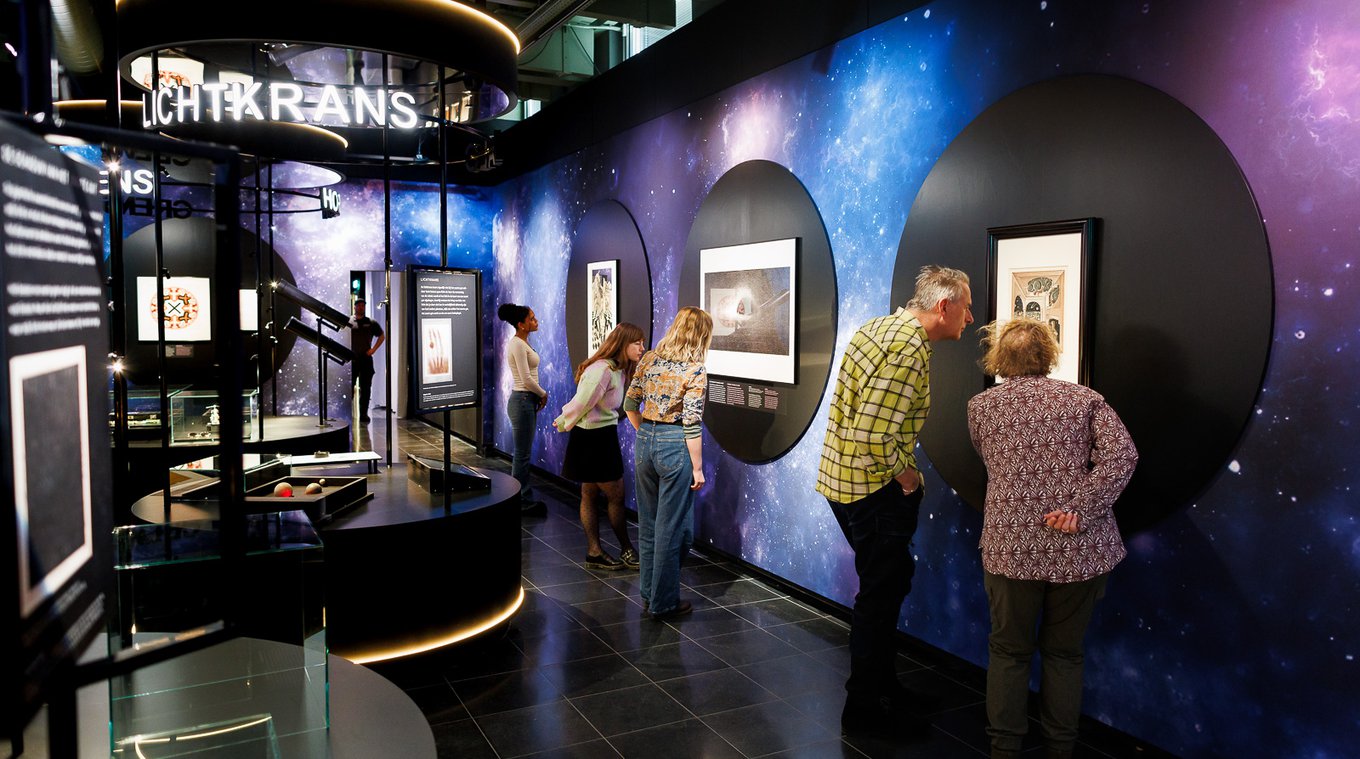De Franse astrofysicus, schrijver en beeldend kunstenaar Jean-Pierre Luminet opereert op het snijvlak van kunst en wetenschap. Het werk van de Nederlandse kunstenaar M.C. Escher hielp hem om grip te krijgen op de complexe optische verschijnselen rondom een zwart gat.
Scroll down for this information in English
Zo lukte het hem in 1978 om een eerste realistische verbeelding te maken van een zwart gat (en zijn omgeving). Omgekeerd gebruikt Luminet in een recent boek over de sterrenhemels in de schilderijen van Vincent van Gogh wetenschap om inzicht te krijgen in de kunst.
Op deze dag organiseren we twee bijzondere lezingen over het snijvlak van kunst en wetenschap. Na de lezingen, tot 18.00 uur, is er gelegenheid voor een drankje.
- De eerste lezing (14.30-15.30 uur) is een duo-presentatie. Luminet spreekt allereerst over zijn baanbrekende verbeelding van het zwarte gat. Wetenschapshistoricus Emilie Skulberg plaats dit werk vervolgens in de bredere context van de geschiedenis van het verbeelden van zwarte gaten - vanaf de eerste krabbeltjes die verschenen na de publicatie van Einsteins relativiteitstheorie, tot aan de ‘foto’ van het zwarte gat die in 2019 wereldnieuws was. Skulberg bedient zich daarbij van inzichten uit de kunstgeschiedenis.
- Tijdens de tweede lezing van de dag (16.00-17.00 uur), spreekt Luminet in bredere zin over zijn werk op het snijvlak van kunst en wetenschap. Tijdens deze lezing worden litho’s - kunstzinnige uitbeeldingen van kosmologische thema’s - getoond die Luminet onlangs schonk aan Rijksmuseum Boerhaave.
Over de sprekers
Emilie Skulberg promoveerde in 2021 aan de Universiteit van Cambridge op een proefschrift over de historische achtergronden van de eerste afbeelding van een zwart gat uit 2019. Onlangs werd haar inzending op een prijsvraag bij Teylers Museum, gebaseerd op dit onderzoek, met een erepenning bekroond. Ze is als postdoc bij Niels Bohr Archive (verbonden aan Universiteit van Kopenhagen).
Jean-Pierre Luminet specialiseerde zich als astrofysicus in zwarte gaten en kosmologie. Hij is emeritus-onderzoeksdirecteur van het CNRS (Centre national de la recherche scientifique). Luminet publiceerde diverse wetenschappelijke boeken, historische romans en poëziebundels, en werkt als beeldend kunstenaar en musicus. In zijn meest recente boek Les nuits étoilées de Vincent van Gogh onderzoekt Luminet de geschilderde sterrenhemels van Vincent van Gogh.
Praktische informatie
Taal: Beide lezingen zijn Engelstalig.
Wanneer: Deze publieksbijeenkomst vindt plaats op vrijdag 13 september 2024. De eerste lezing (de duo-lezing) is van 14.30 tot 15.30 uur. De tweede lezing (door Jean-Pierre Luminet) is van 16.00 tot 17.00 uur. Tot 18.00 uur is er gelegenheid voor een drankje.
Waar: In de congreszaal van Rijksmuseum Boerhaave.
Kosten: 7,50 euro per lezing, daar is entree tot het museum bij inbegrepen. U kunt de lezingen afzonderlijk van elkaar bijwonen, voor elke lezing is een eigen ticket nodig. Tickets zijn te koop via onderstaande link. Wanneer u tickets koopt voor beide lezingen dan krijgt u van ons een drankje voor tijdens de pauze tussen de twee lezingen. Drankjes kunnen niet mee de lezingzaal in.
Deze lezingen vinden plaats in het kader van de Days of Art & Science. Ervaar de spannende connectie tussen kunst en wetenschap tijdens de Days of Art & Science, 12 - 18 september 2024, in Leiden!

Imagining the black hole; between art and science
The French astrophysicist, writer, visual artist and musician Jean-Pierre Luminet operates at the intersection of art and science. The work of the Dutch artist M.C. Escher inspired his scientific depiction a black hole and the complex optical phenomena surrounding it. In 1978 he made the first realistic representation of a black hole. Conversely, in his recent book about the starry nights in Vincent van Gogh's paintings, Luminet uses science to gain insight into the movements of an artist.
Luminet's work on black holes is placed in a historical context by historian of science Emilie Skulberg, who explains the history of imaging black holes in her lecture. How have scientists tried to make the invisible visible over time?
On this day we'll organize two special lectures about the intersection of art and science. After the lectures there is an opportunity for a drink until 6 p.m.
- The first lecture (2:30 PM - 3:30 PM) is a duo presentation. Luminet first talks about his groundbreaking depiction of a black hole of 1979. Historian of science Emilie Skulberg then places this work in the broader context of the history of imagining black holes - from the first schematic scribbles that appeared after the publication of Einstein's theory of relativity, to the 'photo' of the black hole that was world news in 2019. The lecture will draw on the history of physics and astronomy as well as art history.
- During the second lecture of the day (4:00 PM - 5:00 PM), Luminet will speak more broadly about his work at the intersection of art and science. During this lecture, lithographs - artistic representations of cosmological themes - will be shown that Luminet recently donated to Rijksmuseum Boerhaave.
About the speakers
Emilie Skulberg received her PhD from the University of Cambridge in 2021 with a thesis on the historical background of the first image of a black hole from 2019. Her entry in a competition at Teylers Museum, based on this research, was recently awarded an honorary medal. She is a postdoc at the Niels Bohr Archive (University of Copenhagen).
Jean-Pierre Luminet specialized as an astrophysicist in black holes and cosmology. He is Emeritus Research Director of the CNRS (Centre national de la recherche scientifique). Luminet has published various scientific books, historical novels and poetry collections, and works as a visual artist and musician. In his most recent book Les nuits étoilées de Vincent van Gogh, Luminet examines Vincent van Gogh's painted starry nights.
Practical information:
Language: Both lectures will be held in English.
When: These lectures will be held on Friday the 13th of september 2024. The first lecture (the duo-presentation) will be from 14.30 to 15.30 hrs. The second lecture (by Jean-Pierre Luminet) will be from 16.00 to 17.00 hrs. Afterwards, there will be an opportunity to chat and get some drinks from 17.00 to 18.00 hrs.
Where: In the congress hall of Rijksmuseum Boerhaave.
Tickets: You can book a ticket per lecture separately. Tickets are 7,50 euros per lecture. If you attend both lectures, we would like to offer you a free drink during the break between lectures. Please note that drinks can't be taken to the lecture hall.
These lectures are part of the Days of Art & Science. Experience the thrilling connection of art and science at the Days of Art & Science, from 12 - 18 September 2024, in Leiden!

